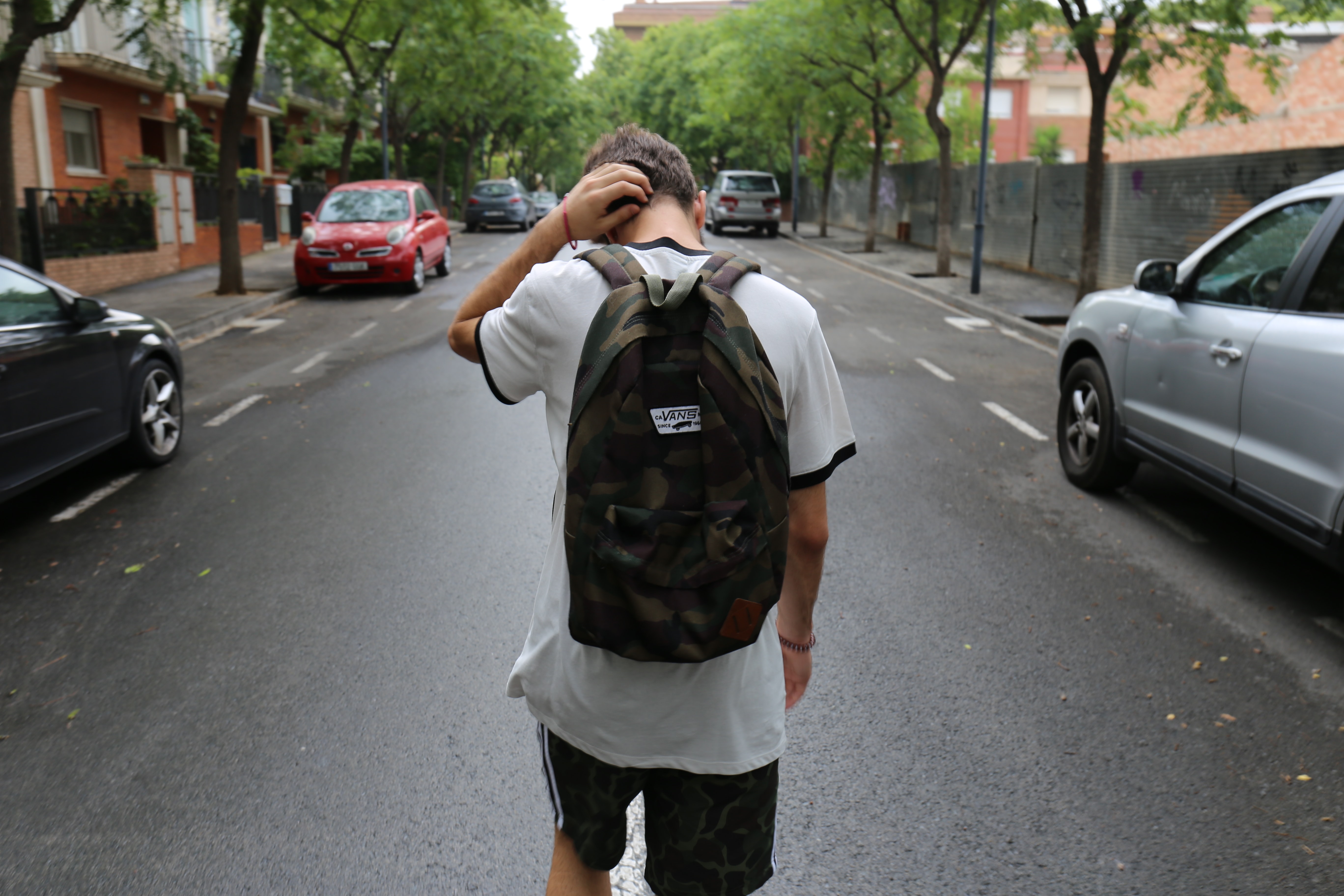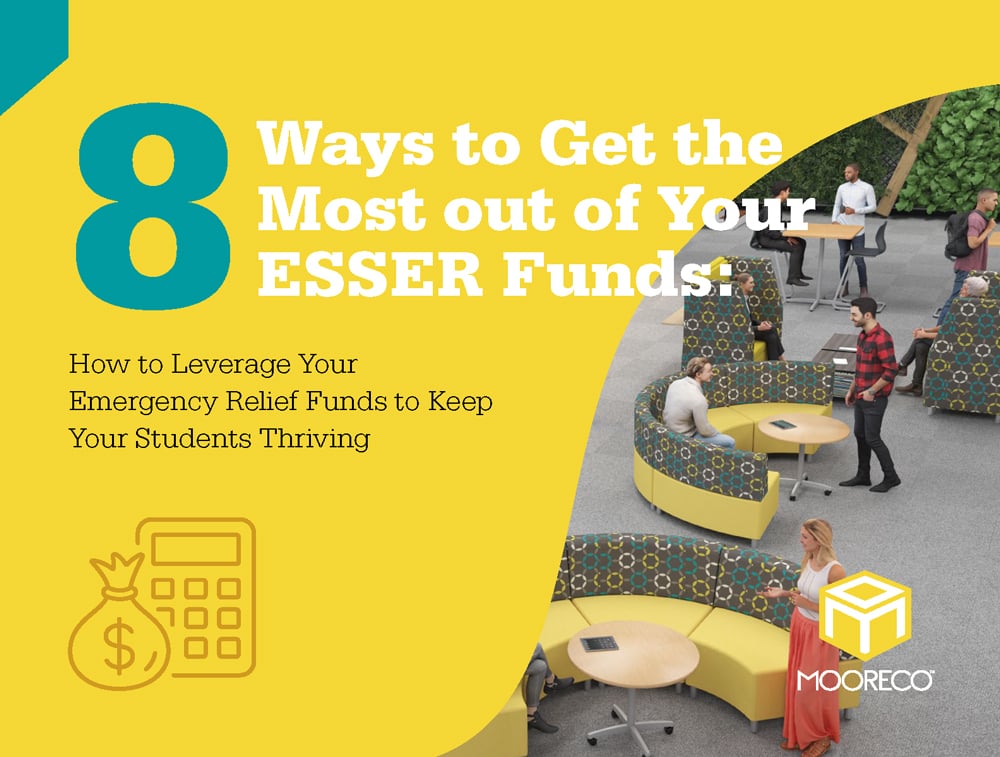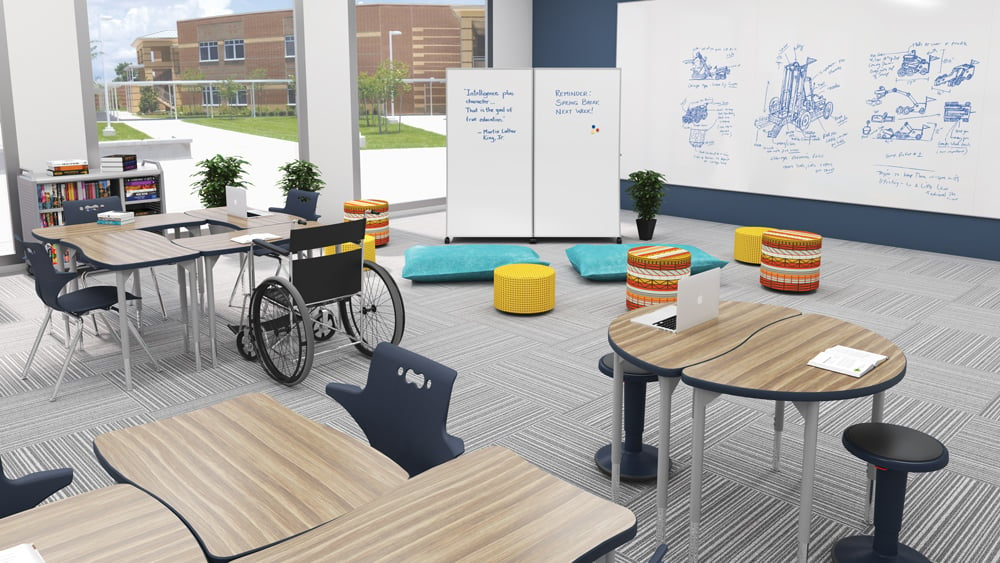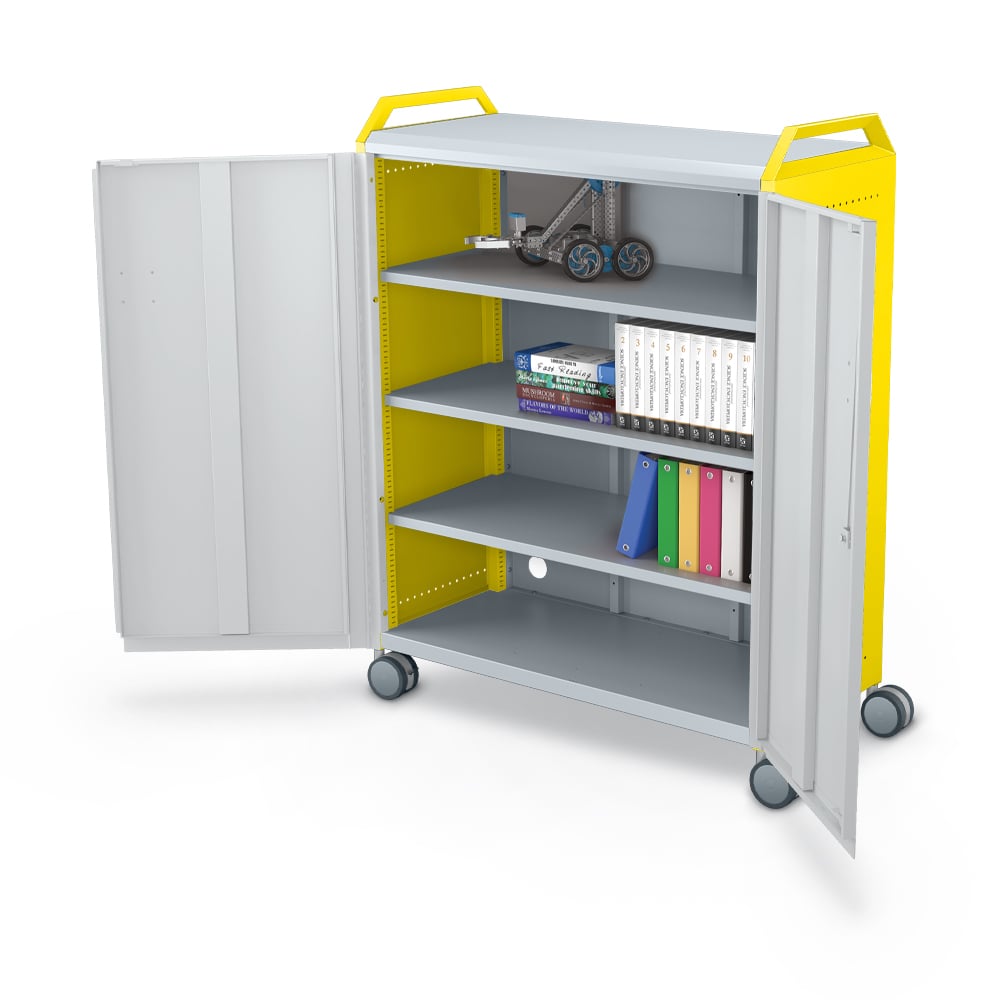How to Distribute ESSER Funds to Combat Learning Loss in Your School
Posted by MooreCo Inc on Apr 14, 2022 2:00:47 PM
How to Distribute ESSER Funds to Combat Learning Loss in Your School
MooreCo is piloting the conversation around how to best serve students in a post-pandemic world. Curating the classroom into a multifaceted learning environment is just one of many ways to adapt to the future of education. Think interactive displays, wall-to-wall whiteboards, ergonomic seating, and standing desks. Whatever your students need to catch up on their learning, MooreCo’s wide range of products are designed to keep academic focus at the forefront.
What Issues Have We Noticed?
There is no denying that the pandemic changed the way students are learning and teachers are teaching. According to The Brookings Institution, “schools have faced severe staff shortages, high rates of absenteeism and quarantines, and rolling school closures. Furthermore, students and educators continue to struggle with mental health challenges, higher rates of violence and misbehavior, and concerns about lost instructional time” (Kuhfeld et al., 2022).

Academic Performance & Learning Loss
Academic achievement has plummeted since schools first sent students home in March 2020. Coupling the trauma of living through a global crisis with the lack of socialization, it’s easy to see why educational performance failed to be a priority, much less a necessity, during the height of the pandemic. Students are struggling to catch up again after two years of what has been labeled as the great learning loss, an inevitability after students and teachers alike struggled to adapt to remote education.
“Average fall 2021 math test scores in grades 3-8 were 0.20-0.27 standard deviations (SDs) lower relative to same-grade peers in fall 2019, while reading test scores were 0.09-0.18 SDs lower” (Kuhfeld et al., 2022). To put this into context, student evacuees from New Orleans after Hurricane Katrina had a 0.17 SDs drop in math scores, which exemplifies the gravity of the pandemic and how it impacted students.
The impact of the pandemic extended far beyond the initial wave of school closures, too; The Brookings Institution saw a deeper decline in achievement in 2021 than in 2020. “Even more concerning, test-score gaps between students in low-poverty and high-poverty elementary schools grew by approximately 20% in math (corresponding to 0.20 SDs) and 15% in reading (0.13 SDs), primarily during the 2020-21 school year” (Kuhfeld et al., 2022).
Social & Emotional Health
Student mental health also saw a decline. Students today are more likely to struggle with depression and anxiety, have thoughts of suicide and self-harm, and suffer from an eating disorder, than they were before the pandemic hit.
“Emergency department visits related to mental health increased 24% for 5–11-year-olds and 31% for 12–17-year-olds between January and October 2020” (Leeb et al., 2020).
Many kids in the United States are experiencing increased loneliness and feeling a disconnection between themselves and their peers. After spending the remainder of the 2020 school year online, away from friends and classmates, students are more in need of community and a sense of belonging than ever before.

How Do We Address These Issues?
The Elementary and Secondary School Emergency Relief (ESSER) Fund provided by the American Rescue Plan (ARP) Act of 2021 allows public schools to collectively spend $122 billion on COVID-19-related needs. If you received ESSER Funds, you may be wondering how to apply that money in useful, intuitive, and successful ways. State education agencies (SEA) and other sub-grantees have until September 30, 2022, to obligate funds, so it is crunch time for deciding where to apply your stimulus grant.
ESSER reserves three state-level allocations specifically dedicated to “activities and interventions that respond to students’ academic, social, and emotional needs and address the disproportionate impact of COVID-19 on underrepresented student subgroups.” All LEAs are required to set aside at least 20-percent of their allocated funds to support these student needs.
Many school districts have chosen to prioritize summer learning and afterschool programs, mental and physical health initiatives, and hiring and rewarding teachers and counselors who have guided students through this stressful time. All of these programs add up to a well-rounded back-to-school plan that focuses on accelerated student learning, physical, mental, and emotional healing, and recruiting and retaining heroic staff members.
So, what does that mean for you and your school? You may choose to follow the trends of other school districts and allocate funds toward hiring teachers and counselors, building out afterschool and summer learning programs, and focusing on physical, mental, and emotional health. But what does that look like in reality? 
Social-Emotional Learning Tools, Furnishings, Products
One of the ways you can ensure a positive experience as students and teachers head back to school is to curate the design of classroom furniture. Color, comfort, simplicity, adjustability, movement, visibility, collaboration, and engagement are known as The Mighty 8 design principles, but they also correlate to elevated learning. Bold color promotes creativity, while physical relaxation allows student minds to thrive. Movement is linked to learning, especially in energetic children who need the freedom to roam in order to stay engaged. Outfitting each classroom with design elements that encourage mental, emotional, and physical well-being will satisfy those basic needs in students and teachers alike, so they can get back to achieving academic excellence.
Solutions to Address Learning Loss & Accelerate Learning
You want to help your students thrive after the great learning loss that occurred during the pandemic. Get your students the guidance they need to excel when you put your ESSER Funds toward exploring modern educational technology, services that offer essential support, and curated environments designed specifically for social-emotional learning. A classroom style that maximizes collaboration creates a sense of belonging. Whiteboard tabletops empower students to take control of their learning journey by fostering creativity in how they retain information. The Double Privacy Pod is a great way for students and teachers to connect one-on-one, eliminating distractions and maximizing focus.

Creating Inclusive Spaces for All Students
Accessible furniture is essential for a holistic classroom, and MooreCo is leading the industry with a line of ADA-approved products that every school needs. Each table, whiteboard, and seating arrangement comes with a wide range of sizes and heights that meet ADA requirements. Not only do students of all abilities feel accommodated but also have a clear path to success. Mixing and matching colorful furniture in the classroom is another way to signal to kids that everyone is welcome here. Whiteboard tabletops are also a great tool for fostering self-expression, while flexible seating encourages movement for students with extra energy.
Environments That Foster Active Learning & Teaching
Hands-on learning, or active learning, allows students to tinker, play, create, and problem-solve, an alternative or supplement to traditional classroom settings. Equipping the classroom with items like the Compass Maxi H3 Cabinet and the Liso Glass Wall panel system gives students the space to explore a new learning style. And, when active teachers are set up for success with functional tools, too, they can better assist their active students.

Safety Solutions for COVID-19 & Future Outbreaks
Being prepared for another wave of the virus might seem unpleasant, but it is practical. Implementing safety measures now will come in handy if students ever need to return to remote or hybrid remote learning. MooreCo offers products like acrylic desk dividers that can equip the classroom for a post-pandemic world and help prevent future outbreaks among students.
Educational Technology for Remote Learning
While remote education was hard to adapt to at first, many students and teachers have warmed up to the idea of doing their work from home. Schools are pushing for in-person learning, but what if a hybrid situation is safest for your community? Teachers need to easily connect with remote and in-person students, which is why readying each classroom for hybrid remote learning scenarios is essential in a post-pandemic world. Products like the MoorePower™ Tower, which grants convenient access to power in small multiuser table groups, are ideal for social distancing in the modern classroom.
Engaging Extracurricular Environments
Students are craving a way to express their individualism through community. During the pandemic, they lost access to after-school sports, social clubs, and other community interest groups. Encouraging students to join extra-curricular activities and, most importantly, offering them through your school, is a great way to get them reconnected to their peers and passions. Outfit the robotics club with a Makerspace Robotics Wall Kit to maximize creativity and empower students to get hands-on and find creative solutions with Compass Makerspace Tables. You can obligate ESSER funds toward providing extra-curricular activities for your students and equipping those after-school spaces with MooreCo products designed for student success.
Topics: Covid-19, Back-to-school, learning from home, hybrid classroom, remote, Thrive
